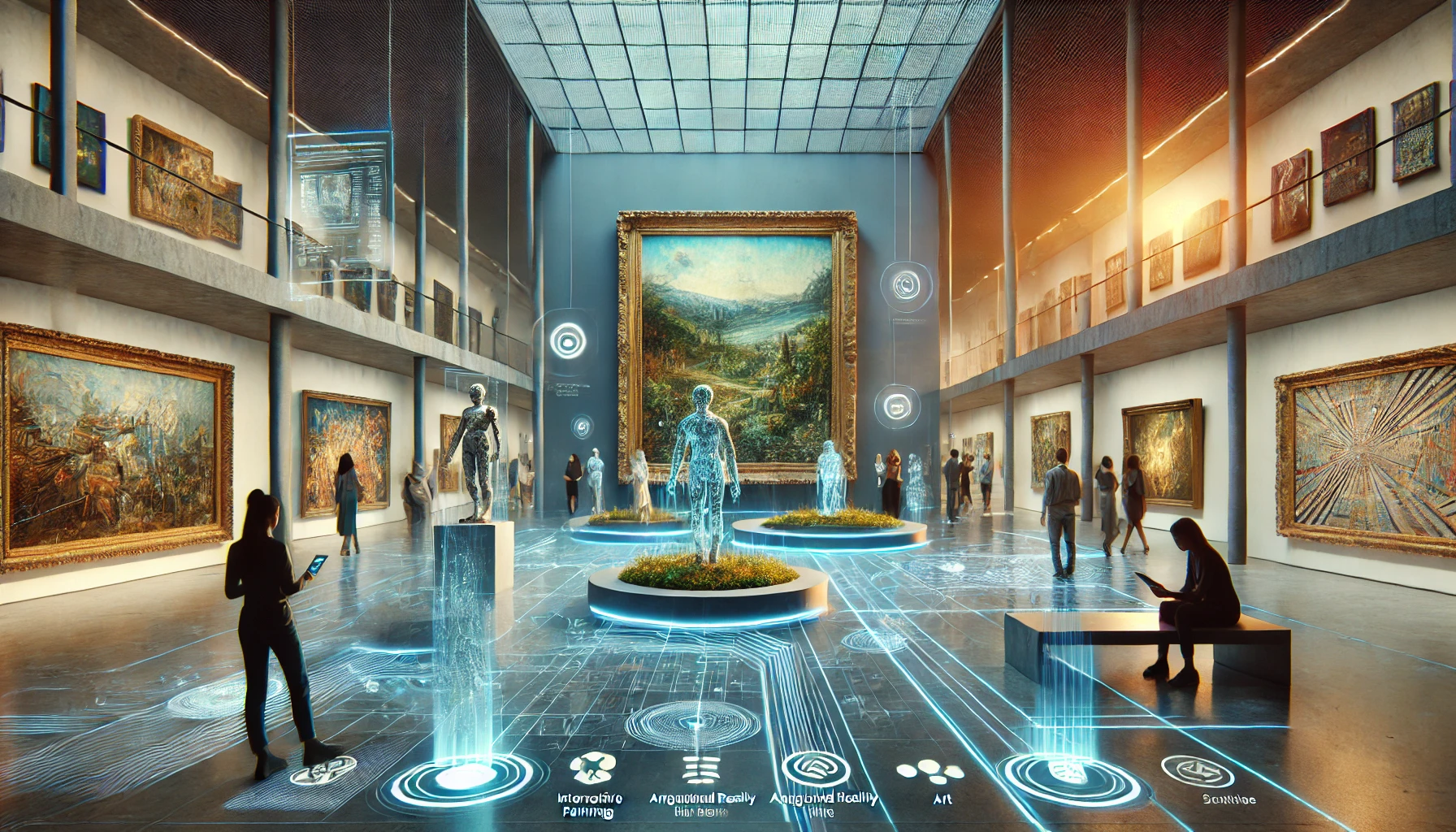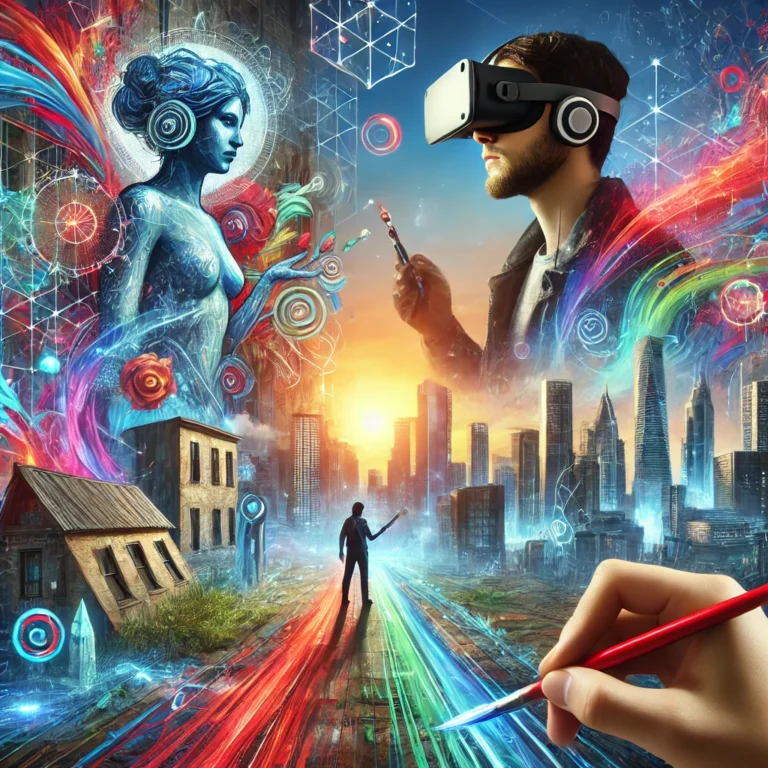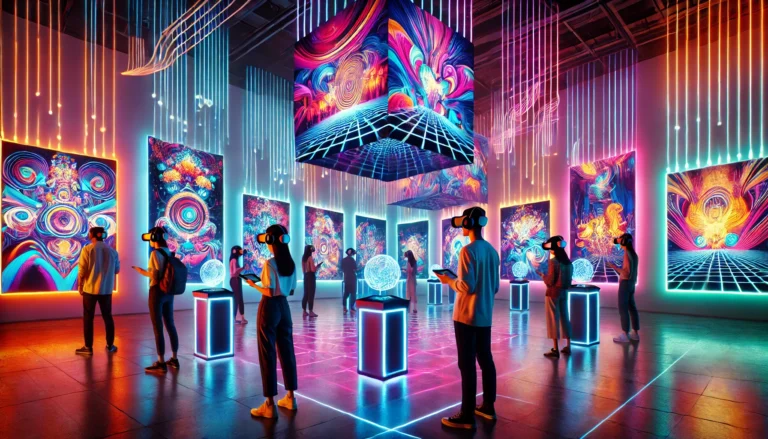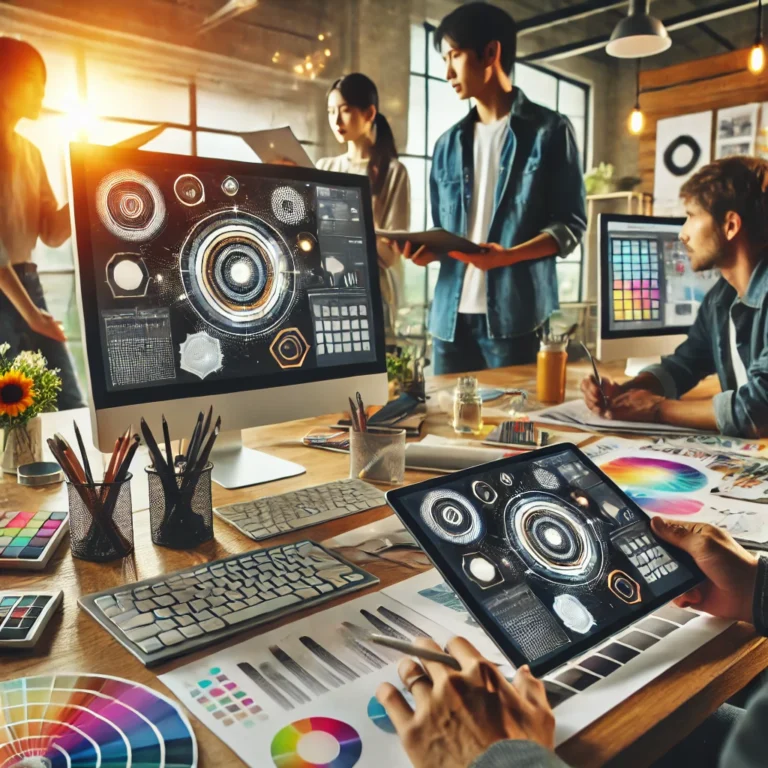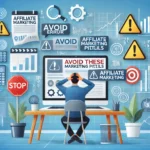In a world where creativity flows like a vibrant river through bustling urban streets and quiet studios, art is transforming before our eyes. Gone are the days when masterpieces stayed confined to pristine gallery walls. Today, art pulses with digital innovation, bold self-expression, and a fearless challenge to tradition. I remember my early days in the art scene. Every new exhibition felt like stepping into an unexplored universe. The colors on the canvas whispered secrets of tomorrow and invited us to reimagine what art could be.
For young professionals carving out their niche in a fast-evolving creative landscape, emerging art trends are not a passing interest—they are a call to action. This journey will reveal trends that blend historical inspiration with modern innovation. Moreover, it will spark ideas that could redefine your creative practice. Whether you are a designer, a marketer, or simply an art enthusiast, this exploration will help you see the familiar in a new light.
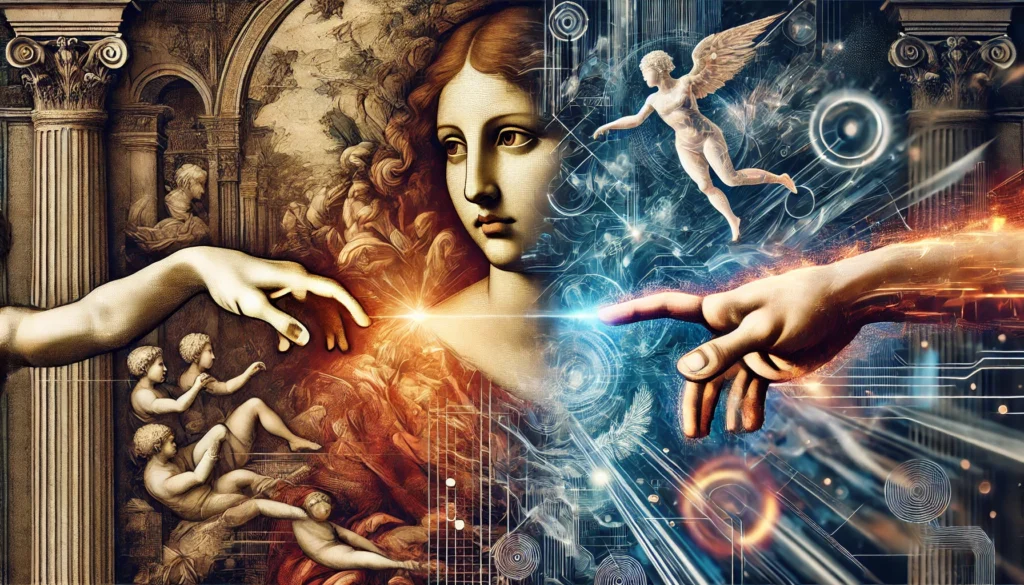
Key Point 1: Understanding Emerging Art Trends
Historical Influences
Imagine standing at the edge of a vast, ever-changing landscape. Every hill and valley is steeped in history and touched by modernity. Understanding emerging art trends is like piecing together an intricate mosaic. Each fragment tells a story from the past while pointing toward a future full of possibility. For example, think of the rebellious brushstrokes of the Impressionists. Likewise, consider the radical splashes of the Abstract Expressionists. Both movements challenged norms and redefined beauty in their time.
Modern Innovations
These past revolutions now form the foundation for today’s trends. In addition, modern artists blend traditional methods with digital innovation. This fusion creates works that resonate across generations. Consider street art. Initially, it was raw public expression. Now, it is a sophisticated dialogue between the artist and urban culture. Similarly, digital installations have become interactive. They invite you to participate actively in the experience. Therefore, ask yourself: How does the legacy of past art movements shape our creative future? What lessons from history can propel today’s innovative spirit?
Real-world examples support these ideas. For instance, many digital installations now transform gallery visits into immersive adventures. As a result, art becomes an evolving conversation between tradition and innovation.
For more insights on the evolution of contemporary art, check out Tate’s official resource on contemporary art.”
Key Point 2: Innovative Mediums and Techniques
Digital Realms
If you thought art was just about paint and canvas, prepare to have your mind expanded. Today’s artists explore digital realms and blend media in magical ways. I recall my first digital art installation. It felt like stepping into a living dream. Walls dissolved into streams of light. Every step triggered a burst of color and sound. In addition, digital platforms such as virtual reality (VR) and augmented reality (AR) transform the way we interact with art. Consequently, a gallery visit becomes a personal adventure where you are both observer and participant.
Blending the Old with the New
Moreover, traditional mediums are being infused with modern technology. Mixed media creations, for example, combine a classical sketch with digital animation. This approach challenges our conventional ideas of art. It is like mixing an old family recipe with exotic spices. The result is familiar yet surprisingly delightful. Ask yourself: Which emerging medium sparks your creative fire? How does technology reshape your view of art? Real-world examples like teamLab Borderless in Tokyo and innovative NFT projects bring these ideas to life. Therefore, art today is a conversation between tradition and innovation.
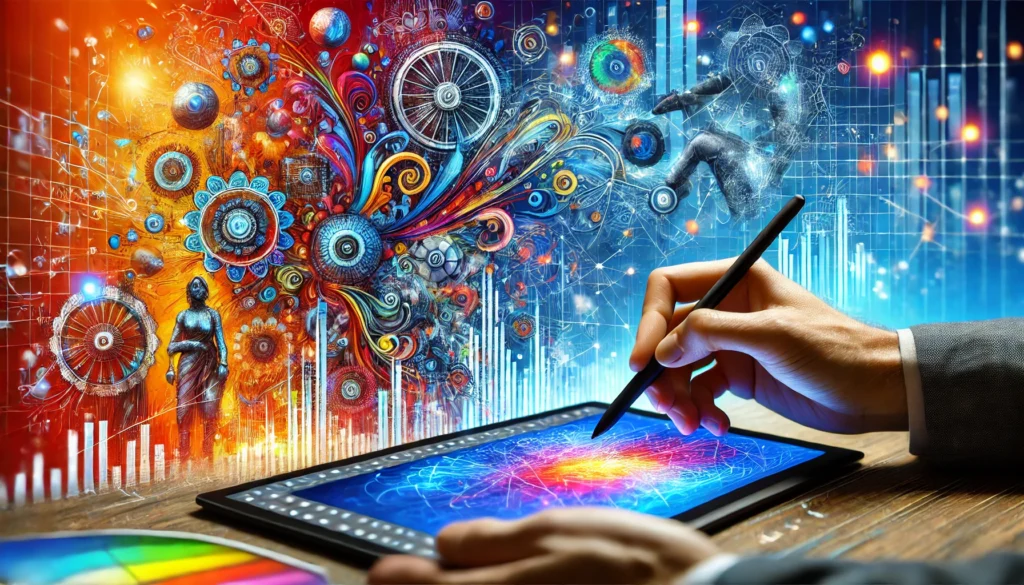
Key Point 3: New Perspectives in Contemporary Art
A Diverse Dialogue
Imagine stepping into an art gallery where every piece offers a window into diverse worlds. Contemporary art is now a vibrant dialogue. It is a fusion of cultural narratives that come together like the colors on an artist’s palette. In today’s creative landscape, traditional brushstrokes blend with innovative lines. This invites us to rethink what art can be.
Bridging Cultures
Artists around the globe harness their cultural backgrounds to challenge old boundaries. For instance, picture a mural where indigenous patterns merge with digital effects. Alternatively, imagine a sculpture that combines classic materials with futuristic design elements. This melding of influences is like a symphony in which every instrument contributes to a harmonious whole. I once attended an exhibition that felt like a journey through time and space. One installation interwove traditional weaving with digital projections. This bridge connected centuries of heritage with modern technology. As a result, it showed that art is a living conversation.
For young professionals, these expressions are more than visual spectacles. They invite you to explore new ideas and challenge conventional norms. What stories hide within these innovative works? How do various cultures and technologies reshape creativity? These questions deepen your appreciation of art and inspire you to add your unique voice to this ongoing dialogue.
Key Point 4: Impact of Social and Political Climate on Art
Art as a Voice for Change
Imagine a canvas that not only captures light and color but also echoes the voices of a community. Such a canvas becomes a battleground for ideas and emotions. Today, art has become a powerful medium of social and political expression. It goes beyond aesthetics to spark dialogue, protest, and healing. I remember a vibrant mural in a bustling neighborhood. The artwork told a story of resilience amid adversity. Every brushstroke was an act of defiance against injustice. Thus, art is deeply intertwined with our collective struggles and triumphs.
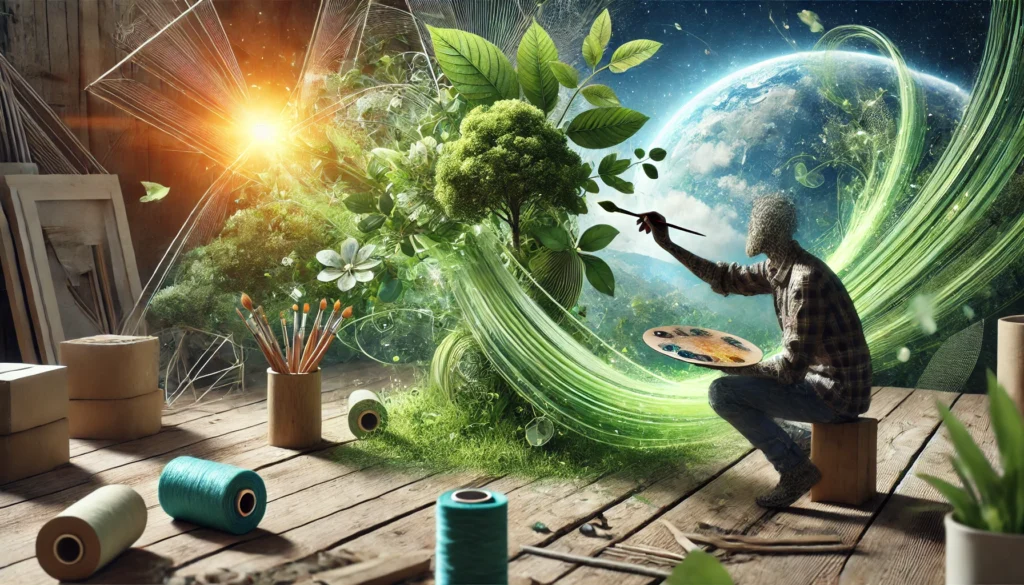
Art in Public Spaces
Artists today use their craft to comment on social injustices and cultural shifts. For example, street art has redefined urban landscapes. Once, plain concrete walls now burst with narratives of protest and unity. Additionally, public installations invite viewers to engage emotionally. Consequently, art acts as a visual protest that challenges the status quo. Consider these questions: How does art mirror today’s societal challenges? In what ways can one artwork spark dialogue about justice and change? Moreover, how might your creative expression contribute to a more informed society?
Real-world examples abound. In many cities, artists collaborate with community leaders to create installations that serve as historical records of collective progress. Therefore, art is both a reflection of our times and a catalyst for change.
Key Point 5: Future Directions in Art and Design
Embracing Technology and Sustainability
Imagine standing at the edge of a new creative frontier. Here, the boundaries of art and design expand with every breakthrough. The future of art is unfolding before our eyes. It blends sustainability, digital innovation, and human creativity into an evolving masterpiece. Artists and designers now harness technology in novel ways. For instance, virtual reality transforms a static painting into an immersive experience. Likewise, artificial intelligence collaborates with human creators to produce unexpected art. In addition, sustainability plays a crucial role. Imagine art crafted from biodegradable materials or installations that generate renewable energy. These innovations tell a story of responsibility and hope.
Shaping Tomorrow’s Canvas
As you consider these directions, ask yourself: What does the next big art trend look like in your eyes? How might the fusion of technology and sustainability inspire your creative journey? Real-world examples, such as interactive digital exhibitions and eco-friendly public installations, offer a glimpse into tomorrow. Consequently, art becomes an experience that you can live rather than merely observe. Ultimately, the future of art and design is a tapestry woven from technology, sustainability, and human ingenuity. It challenges us to reimagine our creative limits and invites us to shape a new artistic landscape.
Visuals and Media
Imagine flipping through a digital magazine that not only informs but also immerses you in vibrant visuals. In this post, images and videos are not just add-ons—they are integral to the storytelling process. Here are some ideas to bring the narrative to life:
- High-Quality Images and Graphics:
- Use striking photographs of modern art installations, digital murals, and interactive exhibitions.
- Create infographics that illustrate art evolution from classic movements to contemporary innovations.
- Include behind-the-scenes snapshots of artists at work.
- Engaging Video Content:
- Embed short interviews with innovative artists and designers.
- Provide virtual tour clips of modern galleries or public art projects.
- Share time-lapse videos that showcase the creation of mixed-media masterpieces.
- Interactive Elements:
- Offer clickable timelines for exploring art history and trends.
- Present interactive slideshows that allow you to navigate digital art galleries.
Conclusion
As we conclude this exploration of emerging art trends, remember that the art of tomorrow is a canvas in progress. It invites you to add your unique brushstroke. We have journeyed through historical influences, innovative mediums, diverse cultural perspectives, and art’s response to social climates. Now, armed with a glimpse into the future of art and design, it is time for you to step into this vibrant landscape.
Consider this your invitation: Explore local exhibitions, experiment with digital art tools, and share your creative endeavors with the world. Let every encounter with art inspire you to see the world anew. In this ever-evolving creative universe, you are both the observer and the catalyst for change.
Audience Engagement
To spark dialogue and deepen your connection with the content, consider these interactive approaches:
- Interactive Polls and Surveys:
- Vote on which emerging trend resonates most with you.
- Share feedback on new art forms or digital techniques you have tried.
- Commentary and Discussion:
- Leave comments to share personal experiences or ask questions about art innovations.
- Use a dedicated hashtag on social media to join a community conversation.
- User-Generated Content:
- Submit your creative projects or digital art experiments for a chance to be featured.
- Participate in virtual events or webinars with artists and join live Q&A sessions.
Additional Notes
To ensure the narrative feels personal and authentic, consider these storytelling techniques:
- Conversational Tone and Relatability:
- Write as if you are sharing an exciting discovery with a friend.
- Use anecdotes and reflections to build a genuine connection with your audience.
- Dynamic Storytelling:
- Begin with a compelling hook that draws you into a narrative journey.
- Weave in real-world examples and case studies to illustrate key points.
- Transparency and Trust:
- Clearly mention any tools, platforms, or resources that enhance your creative practice.
- Maintain a balanced narrative that respects diverse viewpoints and is inclusive for all art enthusiasts.
By integrating multimedia elements and interactive features, this blog post transforms from a simple article into a dynamic experience. It invites you to explore, share, and shape the future of art together.
Embrace the journey into the art of tomorrow and let your creativity light the way forward.
For further reading on emerging art trends and contemporary art, visit Tate’s official resource.

